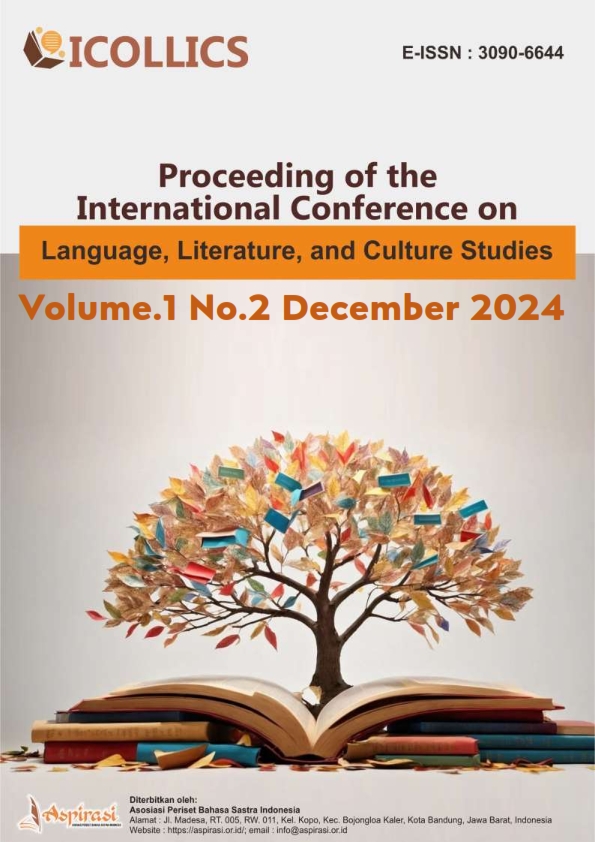The Influence of Bilingualism on Cognitive Development and Cross-Cultural Communication
Keywords:
bilingualism, cognitive development, linguistic psychology, cross-cultural communication, multilingualismAbstract
Bilingualism has been widely studied for its cognitive and social benefits. This article explores how bilingualism enhances cognitive flexibility, problem-solving skills, and cross-cultural communication abilities. Using findings from linguistic and sociocultural psychology studies, this research highlights the advantages of bilingualism in promoting intercultural understanding and adaptability in multilingual societies. It concludes that bilingual education plays an important role in global communication.
References
Baker, C. (2006). Foundations of bilingual education and bilingualism. Multilingual Matters.
Baker, C. (2011). Foundations of bilingual education and bilingualism (5th ed.). Multilingual Matters.
Bialystok, E. (2001). Bilingualism in development: Language, literacy, and cognition. Cambridge University Press.
Bialystok, E., Craik, F. I. M., & Luk, G. (2008). Cognitive control and lexical access in younger and older bilinguals. Journal of Experimental Psychology: Learning, Memory, and Cognition, 34(4), 857–873. https://doi.org/10.1037/0278-7393.34.4.857
Bialystok, E., Craik, F. I. M., & Luk, G. (2012). Bilingualism: Consequences for mind and brain. Trends in Cognitive Sciences, 16(4), 240-250. https://doi.org/10.1016/j.tics.2012.03.001
Cummins, J. (2001). Bilingual children's mother tongue: Why is it important for education? Sociocultural Theory and Second Language Learning, 33-56.
De Bot, K., Lowie, W., & Verspoor, M. (2007). A dynamic systems theory approach to second language acquisition. Bilingualism: Language and Cognition, 10(1), 7-21. https://doi.org/10.1017/S1366728906002732
Diamond, A. (2013). Executive functions. Annual Review of Psychology, 64, 135-168. https://doi.org/10.1146/annurev-psych-113011-143750
Grosjean, F. (2001). The bilingual's language modes. The Bilingual Mind, 1(2), 65-81.
Grosjean, F. (2010). Bilingual: Life and reality. Harvard University Press.
Harris, R. (1990). The linguistics of bilingualism. Hodder Education.
Kim, Y. Y. (2001). Becoming intercultural: An integrative theory of communication and cross-cultural adaptation. SAGE Publications.
Kramsch, C. (2006). The multilingual subject: What foreign language learners say about their experience and why it matters. The Modern Language Journal, 90(3), 311-312. https://doi.org/10.1111/j.1540-4781.2006.00432.x
Kroll, J. F., & Bialystok, E. (2013). Understanding the consequences of bilingualism for language processing and cognition. Journal of Cognitive Psychology, 25(5), 497-514. https://doi.org/10.1080/20445911.2013.799170
Lambert, W. E. (1974). Culture and language as factors in learning and education. Canadian Journal of Educational Research, 1(4), 4-13.
Matsumoto, D., Yoo, S. H., & LeRoux, J. A. (2001). Emotion and intercultural communication. In Handbook of Culture and Psychology (pp. 213-231). McGraw-Hill Education.
Nicol, J. L., & Givón, T. (1999). Cognitive and communicative approaches to syntax. Academic Press.
Peal, E., & Lambert, W. E. (1962). The relation of bilingualism to intelligence. Psychological Monographs: General and Applied, 76(27), 1-23.
Piaget, J. (1952). The origins of intelligence in children. Norton.
Sapir, E., & Whorf, B. L. (1956). Language, thought, and reality: Selected writings of Benjamin Lee Whorf. MIT Press.
Thomas, W. P., & Collier, V. P. (2002). A national study of school effectiveness for language minority students' long-term academic achievement. Journal of Educational Research, 92(6), 73-88.
Vaid, J., & Huang, H. (1999). Bilingualism and cognitive flexibility. Psychology Press.






